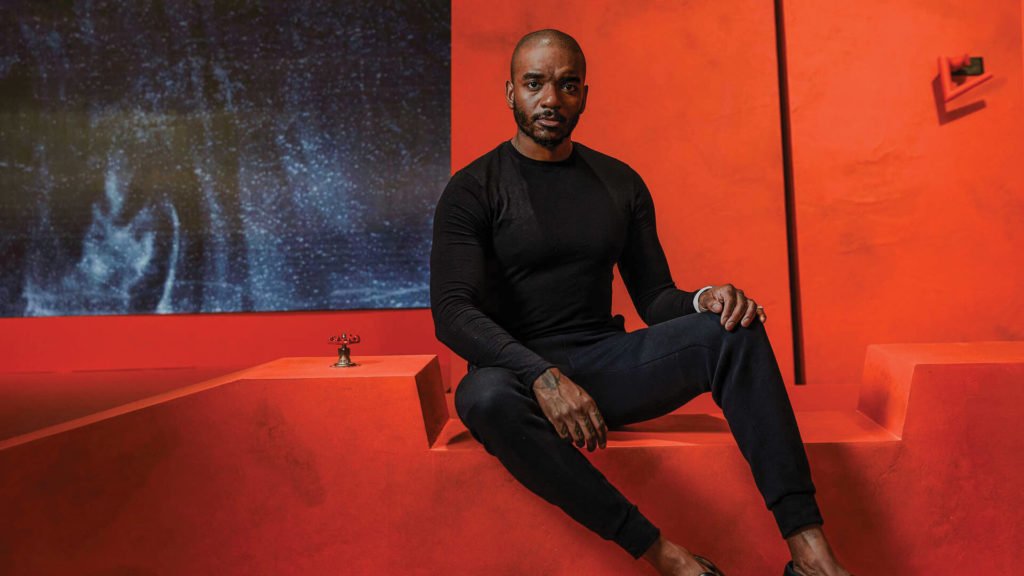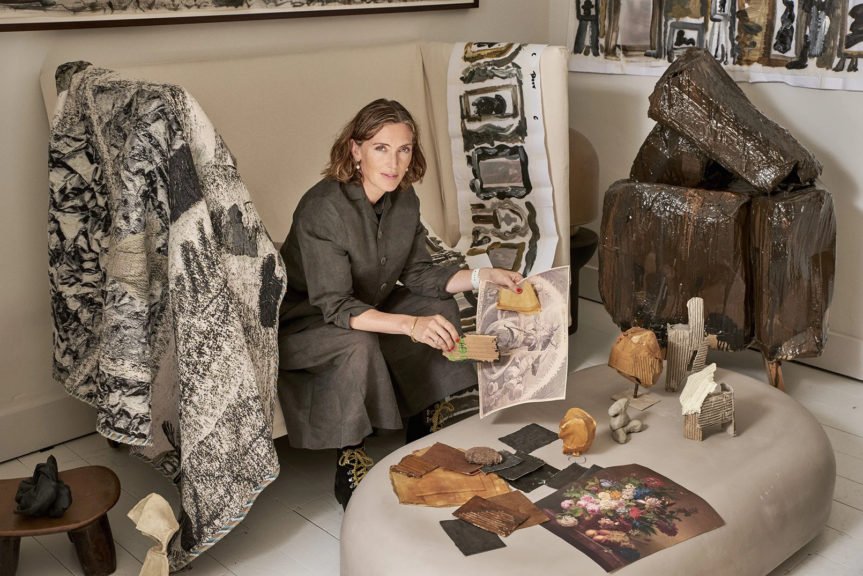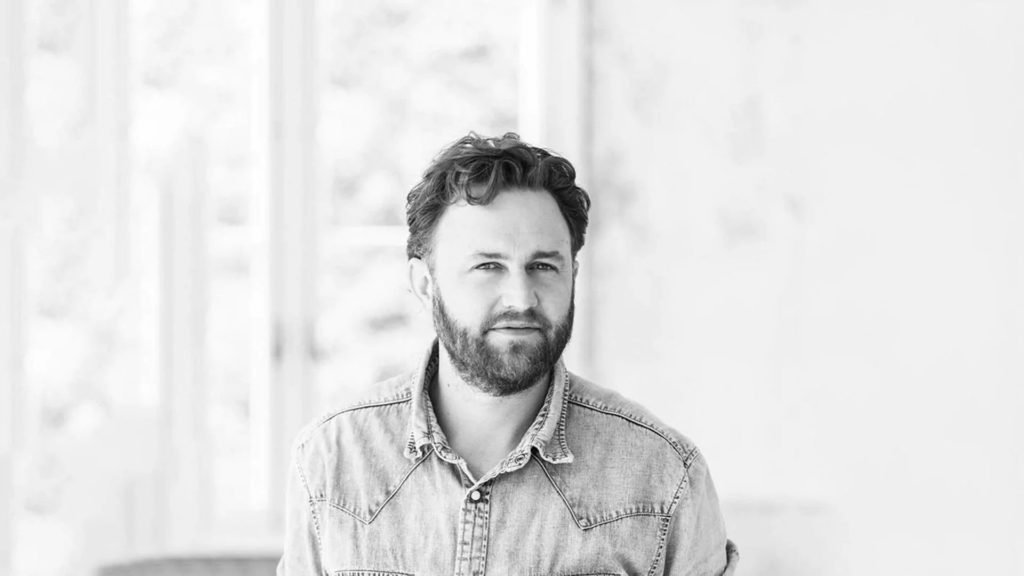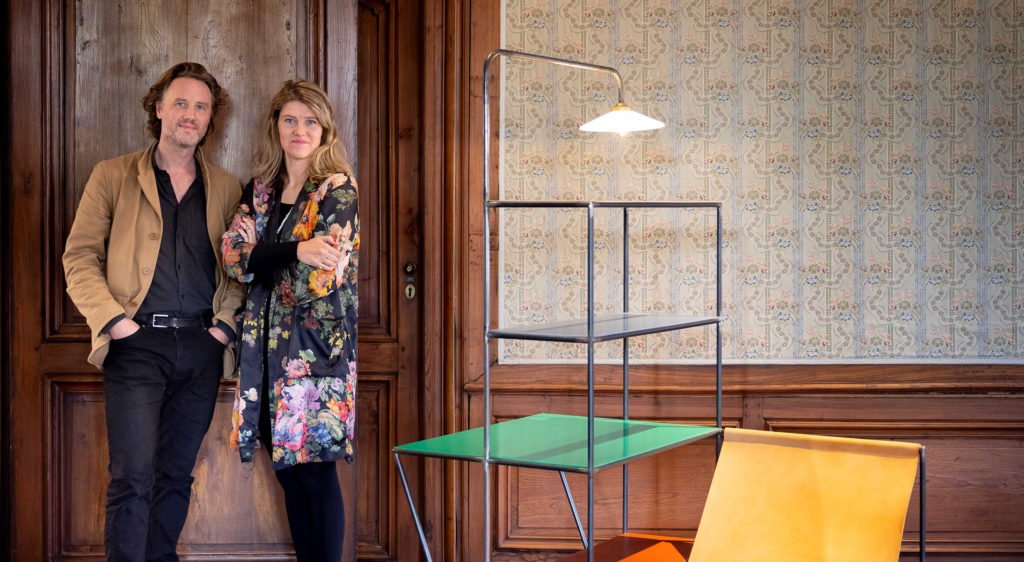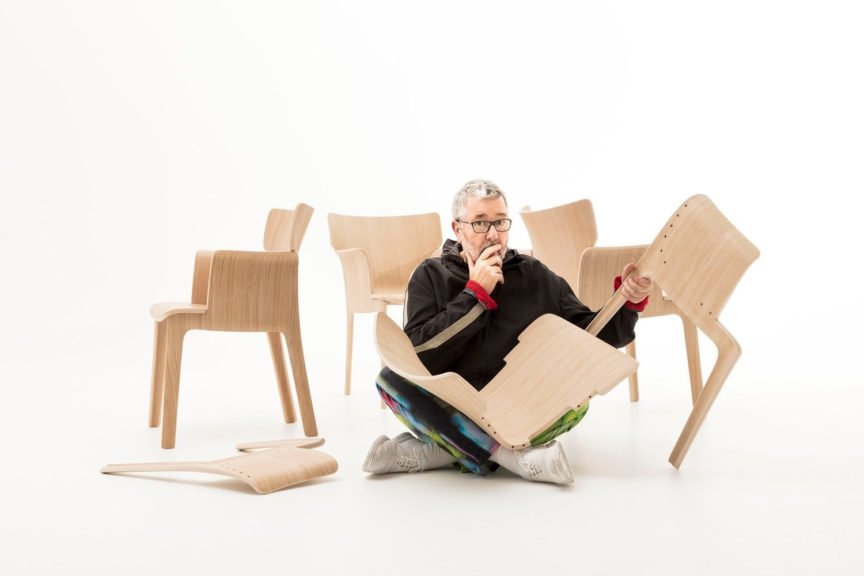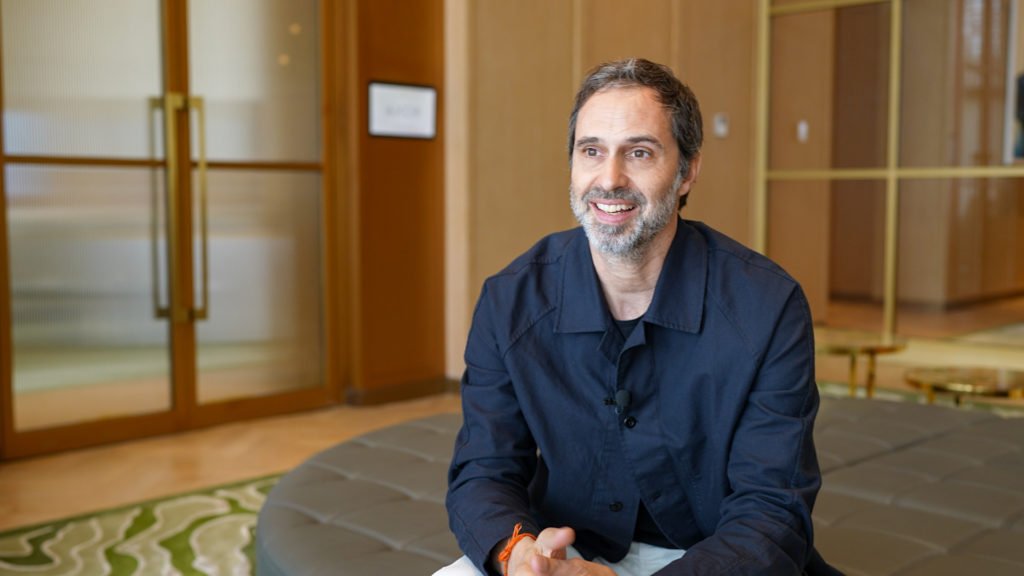We caught up with Eames Demetrios, Director of the Eames Office and creator of Kcymaerxthaere, a parallel universe coexisting with our world. He is the grandson of the legendary husband-and-wife design team Charles and Ray Eames. Among other things, we talked about his grandparents’ legacy and how different designs would be if they were designed in this generation. His insight into the world of design has given us a renewed sense of appreciation for the intricacy of the creative mind.
Complete transcript of interview
Did your grandparents’ legacy have an influence on your career choice?
People often assume that I grew up with famous grandparents and I didn’t actually because if you had told anybody, you know, as a rockstar designer they wouldn’t have believed you and, you know, that sort of phenomenon didn’t really happen until Starck and things like that in the in the eighties.
And so what I’m trying to say is that we just knew as grandchildren that they were amazing people but we didn’t know that they were famous or even that the world outside of us knew knew anything about them. So what that meant is that we were actually very lucky that we just sort of took them as who they were, which were who were great people, doing doing wonderful work and in a way it meant that we ended up learning about design and aesthetics backwards because they weren’t sort of formally teaching us lessons. So for example they believed that the role of the designer is basically that of a good host anticipating the needs of the guests.
They never said that to us when we were growing up but when we look back we see that we were getting that lesson all the time, whether it was having a picnic at the office when we come visit, whether it was the way they were you know kept track of what movies they’d shown us because they made over a hundred and so they made sure that they they showed us new ones each time and we can always request more seeing ones we enjoyed even the whole experience of visiting the office the way the office would change and what I mean by that is the office and Eames office literally changed. The walls of the office were held in place with clamps so every time we went in there is a little bit different and we see the models that they did.
So I think that we grew up thinking that these sort of aesthetic things were not really bonuses or icing on the cake but they were actually, they could be the cake, and in in my particular case, you know, I didn’t really plan to have anything to do with design, but after my grandmother died, and she died pretty suddenly, I realized that if one of us didn’t help really take care of the work and the legacy things we cared about would go away and again I think that a lot of that was based on sort of these intuitive experiences I had, and my siblings had, and now together all of us are the next generation taking care of Eames work.
How different would Eames designs be if they were designing in this generation?
If Charles and Ray were around today nobody really knows what they would be doing but I can say that I’m pretty confident of how they would have approached things and because I think that what is important to understand is that for Charles and Ray it was always about the design process and the and so therefore the first thing they would have done, and they probably have been doing it all along, is they would have played and I think that that’s really critical there was with all the work that they did whether it was the molded plywood or the films there was always a period where Charles and Ray together were the only ones working on something and were exploring a new medium and, they they did that because they didn’t want to waste other people’s time. They wanted to not have that pressure but everybody watching and you know – “Are you trying things out?” They really wanted to get a handle on what the potential but what the basic rules of the game were and I think that if they if they were around today they would have done that just probably in different medium.
I mean maybe the molded plywood issue would have had a different solution and they would have identified a, you know, a vacuum there but another thing they would have done is said what are the needs people really have and I think that that’s the that’s the key to how they approached all these things. You know when they designed something you know they they said that the last thing they thought about when they were designing a chair was how it looked. So it’s really always about identifying the problem and so whether that problem was in furniture, or that challenge was in, you know, in communications or whatever they would have pursued it and I think what’s really great about that is that that’s something that you know anyone can take their process and if I identified the new problems today.
My mom was with Charles when somebody said “You know Mr. Eames you’re such a genius!” He said “Genius nothing – we just worked harder” And what they did is, and they did work really, really hard, they applied their process of iteration and they really were willing to surrender to the design journey and I think that that’s, you know, especially companies on the whole today, they say they want to be design driven but they aren’t. They want to be you know they want to be result driven and they don’t really want to be surprised by by the outcome so therefore it’s really up to the designers to be the ones who are design driven.
And in Charles and Ray’s case, when they started working with with Vitra and started you know approaching a manufacturer they not only knew how to make the chair, they also had created the tools to make that chair. So they invented a technique as well as a finished product and I think anybody who could do that today would get the attention of manufacturers. It wasn’t that they just said hey we got this great sketch please make it for us they figured out how to do it all and they would have done that same process of playing discovery in whatever area needed a problem solved.
Can you tell us something about Charles and Ray that you couldn’t find in a book?
One of the things I think is really interesting about Charles and Ray is that I don’t really know of any place where they described themselves as modernist. I think they accepted that most people put them in that classification and they weren’t upset with it and they thought many beautiful things that come from both modern architecture and modern design. But they really thought of themselves as designers, and they really thought they saw a beautiful design everywhere when you go to their their house, the Eames house, you see these collections there and it’s not all modern design. There’s some, you know, there’s a lot of folk design, there’s Thonet chairs, they are all sorts of different things there and I think it’s always surprising to people to see that you know these icons of modernism didn’t live in a white box.
In fact they actually painted their white box many different colors. Not just for aesthetic reasons. Maybe they wanted the the colors to help people understand, both guests and themselves, understand the space differently. So I think one of the things that people don’t fully appreciate about them is that aesthetics could be a part of function and yet they never got so carried away with it that it was the only aspect of of what they were doing.
They also, I think a lot people don’t know, they made over a hundred short films. You know, we’re showing most of them at the Vitra campus, and for the Eames Celebration. And it’s kind of staggering to know that, to realize that, you could sit there for 10 hours and never see the same film again. And yet it really suggests just how important that body of work was to them, but that whole time they’re still making the furniture and trying to improve the furniture. So I think that people are still at the beginning of understanding just how broad their work was.
From the iconic works in the Eames Collection, which one lies closest to your heart?
There are really too many Eames pieces to pick a favorite. I mean for me the LCW – the molded plywood chair, where the legs are molded plywood as well is practically a perfect chair. I mean it’s so beautiful and yet I really love seeing people see it for the first time and say, you know, “That looks uncomfortable.” And I say, “Well, you know, please sit in it.” And they’re like, “Wow! This is comfortable!” and I’m always like, you know, this isn’t supposed to be homework, you know, only get these chairs if they’re comfortable for you you know it’s not… it’s not… don’t buy them because somebody told you they were famous, they have to work in your life.
And I think that that’s, you know, so I love that experience with that trial of sitting in that chair. There’s a chair called the aluminum group chair, which I think is fascinating because you could only design it if you knew exactly how to make it. And again in this day and age where people often design things on the computer and sort of assume that somebody can make it for them they really let that making process impact the physicality in the chair.So I love that aspect of it.
The Eames house is completely exquisite, the film – Toccata for Toy trains is a gem, and again, a lot of people, haven’t seen that, I mean, you can watch it with your kids and they’ll just think it’s incredibly charming but you can also talk for hours about the concept of the honest use of materials that’s in all these Toy Trains but also in all the Eames furniture as well. So I think that, so what else.
The powers of 10 is amazing. I mean I’ve watched it many, many, many times with many different groups and even though people now have Google Earth which is basically based on powers of 10 the film itself still delights because it’s so clean and and precise and and there’s not a lean, there’s not any fat in that film, and I think that it’s it’s an example of how they were really able to get to the essence of whatever challenge they were, you know, trying to get at. And the other thing that’s great about that film is that, you know, scale is such an important issue to understand and yet for most people, it’s not nearly, it’s not really that intuitive for most people.
We’re much more comfortable with sort of you know linear growth. But exponential growth is is actually a really important part of the physics of the world, the economies of the world and yet we don’t really have an intuitive sense of it, and yet it’s defining our world. So there’s a film that’s made 40 years ago and you can still build a whole lesson and life experience on it from there. So those are just a few of them. I mean I could come up with a different list tomorrow.
What drove you to create the Kcymaerxthaere Universe?
My Kcymaerxthaere project came from a lot of different places but one of the sort of prime ones was I thought, wouldn’t be cool if you could visit a story and then you know then you sort of have to say, well how would that work, and then you start thinking about things like virtual reality but then then you realize that you know, sometimes wise technologies are better than smart technologies. And you know if we want, if I wanted, to create an experience that will be around for a very long time you can’t really require a whole ecosystem swapping out the latest you know VR or whatever. So why don’t we create something that you could stumble on in the desert and not have the apparatus, as it were, you know, be so transparent So I had to sort of think about the things that would allow that to happen. So then I thought wouldn’t it be cool if you just sort of started installing a piece of the story in different places both not just text but actually physical form. And then one day I realized nobody was stopping me so that was about it. If I wanted to do it I better start doing it. So that was about 15 years ago and it’s really turned out to be an amazing and rewarding experience.
Do you find that narratives are an easier way for people to relate and understand your and your grandparents’ work?
I mean I think everybody likes stories and you know in my own work I’m more of a storyteller, in terms of, like literally creating a parallel universe that people can explore and hear the stories of. So I think that, you know, I think the stories, you know, are not.. they can be really good they can also be dangerous and sometimes we tell ourselves the wrong stories or stories that can cause a little trouble.
But for me personally I think there’s a beautiful side of stories. That they can transport you and help you see the world fresh in certain ways and I think that they also sometimes make bigger concepts clearer. The trick of course is to make a bigger concept clearer without losing the essence that you need to you know extrapolate to the next level and I think that’s where sometimes… where people are a little sloppy with their storytelling now. That they don’t… they leave out the the ambiguity or the the information that allows you to extrapolate in a meaningful way and that’s just my opinion.
What makes a piece of design stand out to you?
There are a lot of definitions of good design. The one that I really enjoyed that Charles and Ray used, which was, they said, if an object was really well designed, then the idea of it having been designed wouldn’t even come up at all. And I think that, you know, for me I’m very wary of people who don’t quite distinguish between design and style. And there’s nothing really wrong with style per se. But, when it becomes.. when people privilege that over the actual problem-solving process of design you can get into a little bit of trouble. And I encounter or read about companies that often say they want to be, they want to be design driven, and you know being design driven is hard. It’s not just making something pretty – that can be part of it. It’s really trying to figure out what is the essence of what it is you’re trying to do.
And so you know, I’m just …so what is a good design to me. It’s something that works. It’s something that you know that rewards care. That you can build upon. That improves an aspect of your life without hopefully degrading another aspect that was well taken care of before. You know the aesthetics of it are important – they are certainly. I mean, I’m like everybody. I think humans are descended from magpies so we love shiny objects. So you know there’s some beautiful things we see that we covet but I think that the real challenge is make sure that after you connect with people with that desire that then you deliver.
You know, that it’s something that you really do want to bring into your life. And I think that that’s you know one of the things that I think Charles and Ray talked about which I find is so interesting is that you know.. as the world has.. this is 40 years ago they were talking about it… as the world has fewer, has more and more challenges with the with their resources we almost have to start developing a new set of covetables that are not so, if you want to call them, resource or energy intensive. And so you know those I think are also going to be the beautiful designs. It just may be a different kind of beauty.
What exciting project are you working on at the moment?
So there have been a couple of big projects for for me this year. One huge one was that we organized – we have a traveling show of the Eames work that started at the Barbican in London and it’s having its final European venue at the Vitra campus. And we wanted to add something special because they have such an amazing Eames collection. So we worked with the Vitra design museum for just about all of this year to come up with four exhibitions that can kind of… could be sort of simultaneous on the campus and get people a really rich experience they couldn’t get otherwise.
So there’s the Power of Design, which is the exhibition that was at the Barbican. There’s a Film Festival. There’s one about toys which is another underappreciated aspect of the Eames work. And then there’s actually a chance to see a lot of their prototypes which are in the Vitra design museum archives. So that was like a huge undertaking because we really wanted to, sort of, have our last venue in Europe be quite spectacular. We also in conjunction with that actually brought out a number of number of books, including a resource book about the furniture and a book of words and images by by Eameses. So the year has been pretty full on I have to say.
And then on top of that in my own work I have a project called Kcymaerxthaere which is a global work of a sort of multi-dimensional storytelling. And so far we have 133 sites and 27 countries including one here in Dubai. So that’s been really rewarding including an installation we did during the total eclipse that took place in the US in the summer and that was pretty awesome. But Kcymaerxthaere is kind of a way to help people look at the world afresh and give them the way to have a fictional experience that you can visit with all the the, I hope evocativeness, that that implies.
What advice would you give young artists and designers?
So when I started doing my my own work it was, you know, something that people really didn’t know existed, I mean it didn’t exist, I’m thinking particularly of this Kcymaerxthaere project of mine and people might have asked me like how did Charles and Ray inspire me and how did they influence my work and you know in a way it’s a really hard question to answer and you know some people say my pictures looks like theirs, some say they look different, I mean all these things kind of are in way noise.
But, I feel the way I sort of always consciously felt like they inspired me, had to do with their attitude and this idea that if you had, if you have an idea you should really do your best to pursue it. And not in sort of this romantic way that the whole world is stupid and you’re the only one who understands it but, more from the standpoint of doing the hard work of trying to make it better.
One of the things I think I realized from studying their work and also just observing them is they realize that if you don’t believe in your own work then nobody else is going to. And so that’s sort of a cute thing to say in a sense because you know you still need to have the resources to do it. So always to the best of my ability I tried to pursue this idea of the Kcymaerxthaere project. So years later after I had started it I gave a talk in Canada at a place I knew that Charles and Ray had given a talk and so I asked… I did some research at the Library of Congress and actually found the notes that Charles had brought to that lecture. And when he said… he was asked this question of but you know what advice do you give to young designers and his answer I thought was really really good. And what he said was is that everybody in their life has a margin. Now there was a little bit of extra time or resources and you know that could be really tiny and there’s certainly people who are say so close to subsistence living that you know it’s not quite the same thing but in the end there’s actually a lot of truth to it.
And he said the problem is that most people that they squander this margin. They don’t protect it. He said you really have to protect it. Now the point is is that he’s really talking about especially people who are trying to make a creative life or a life which is about doing things that maybe people don’t fully know are possible yet. So you know obviously if what you really like doing is watching football you should watch football and there’s nothing wrong with that. I mean that’s that’s your thing or if you like, you love beer and you want to taste all the beers in the world. So it’s not… it’s not like a judgment that one has to want to use this margin to create new work. But this is a question, you know, this is a question for young designers, young artists. And those people do want to do something else. They do want a challenge and the thing about it is is that when I heard that or I read that I realized that that’s actually what it means, that they by example had shown me that. Because that’s you know what I had tried to do in in my work in these things that are not, I mean, I have made films but people know what films are so you have sort of a fighting chance of explaining what you’re trying to do.
But when something is actually you know brand-new you need to figure out a way to get it further or far enough along the people can do it. And now of course we just call this concept of having a start up. But I think that Charles and Ray were doing that before the start up concept even existed. I mean they you know spent six years trying to figure out how to mold plywood. And you know there were a lot of people who worked there over the years but the core was always Charles and Ray. And for the first couple years there was only Charles and Ray and I think that that concept of the margin is something for any starting designer to think about, is that, are you protecting that. Are you really doing, putting all that extra time that you have into what you want to do or are you using up.
I mean what a really good friend of theirs who actually worked at the office, a guy named Park Meek, and he was a real character, he’s a great guy, and he told me that when he worked for Charles and Ray… he was at a you know as a Saturday night he was at a party in Hollywood and so with other designer people and a guy a guy came up to and said what you doing Park. He said so I work at the Eames office you know. So the guy goes “Yeah, Charles Eames is so so lucky that he gets all that work.” So Park says “So what are you doing?” And the guy said “I got this great idea for this and I’m working on it.” And he said “What are you doing right now?” The guy said “Well no I’m working on this idea for a new chair or something like that.” He goes “No. Right now, what are you doing?” He goes “Well, I’m at this party with you. We’re talking!” And Park goes “Yeah. Charles and Ray are back at the office working!”
And you know Park always loved telling that story because it really was the essence of how you know they really did work really hard and they protected that margin. And then one of the things that people don’t know about Charles and Ray is that they didn’t actually achieve any sort of reasonable economic success for about ten years. When they did the plastic chairs that transformed their life. It transformed the furniture industry. But for ten years… and in those ten years when they… before they were “successful” they made films. They made architecture. They made exhibitions. They made multimedia. They made furniture. They made textiles. They made graphics. The whole diverse body of work that we associate with them. But too many people assume that they only did that because they got a bunch of money from the furniture. They did that all along and they figured out how to do it and sometimes it was tough but that’s what this idea of you know not squandering your margin is all about.
And if it had all been a failure financially they would have been a little disappointed. But hey they did all those cool things.

